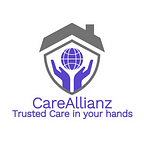Intravenous therapy at home
Contents
- Intravenous therapy at home
- What is Intravenous Therapy?
- Benefits of IV therapy
- Why and who requires IV therapy?
- How is intravenous therapy administered?
- Methods of administering intravenous therapy
- Complications due to improper placement of IV catheter
- Why do you require skilled nurses for IV therapy?
- Benefits of IV therapy at home.
Intravenous therapy at home
What is Intravenous Therapy?
Intravenous means “inside a vein.” Intravenous therapy is a medical procedure where fluids, medications, or nutrients are administered directly into the vein or the bloodstream through a needle or a tube.
Benefits of IV therapy
- Post-surgical IV therapy
- Instant hydration
- Infusion of medication, nutrients, antioxidants, etc
- Sustain and maintain health
- Prevent further illness
- Management of pain
Why and who requires IV therapy?
According to research studies, older adults are a special patient population who require attention to infusion therapy like the administration of intravenous medications, fluids, and blood components because they are high-risk patients who suffer from diabetes, hypertension, cancer, cardiovascular disease, kidney disease, pain, etc.
Long-term care patients too suffer from severe infections, nutritional deficiencies, immune diseases, and severe dehydration and also require IV therapy for improving and maintaining their health.
Other patients who need IV therapy are patients post-surgery, with cancer, diarrhea, athletes, weakness, and for vitamin, prophylactic and diagnostic therapy.
How is intravenous therapy administered?
Intravenous therapy is given using a plastic tube called a catheter with a needle that is inserted directly into the vein after which the needle is slowly removed and the catheter is secured with tape.
Methods of administering intravenous therapy
There are mainly two methods of administering IV therapy, they are:
- Infusion Method: This method is used when the administration of diagnostic, prophylactic, or therapeutic intravenous (IV) fluids or medications is given over a period of time.
- Injection Method: It is an act of forcing a liquid into the body using a needle and syringe.
Complications due to improper placement of IV catheter
- Air embolism: It occurs when air is pushed into the vein.
- Hematoma: Bruises that occur when the blood is leaked into the nearby tissues.
- Infection: It occurs when a catheter is placed without maintaining sterile techniques.
- Collapsed vein: When IV is placed for a long duration the needle tends to collapse.
- Extravasation: When the needle is punctured through the vein blood gets dislodged, and fluids can sweep into nearby tissues around the vein leading to bruising
- Phlebitis: Phlebitis occurs when the vein becomes swollen because of the IV.
Why do you require skilled nurses for IV therapy?
Patients who are home require continuous IV therapy and unless it is given by skilled nurses or health professionals they are at high risk of infection.
Skilled nurses will be able to:
- Aid in treatment and improvement of patient health
- Perform the procedure without any complications
- Maintain aseptic techniques
- Minimize discomfort or pain while inserting the catheter
- Administer the medication carefully while taking precautions
- Monitor the patient’s condition
- Identify any signs of infection, phlebitis, and vein collapse.
- Prevent complications like air embolism, extravasation, hematoma, etc.
- Help in preventing further complications
- Document and report any issues to the consulting physician
Benefits of IV therapy at home.
Home IV therapy allows the patient to:
- Be in a familiar setting at home, comfortable and calm
- Avoid unnecessary stress and strain of traveling and staying at the hospital
- Prevent the cost of hospital stay and also travel.
- Prevent unnecessary infection due to hospital exposure and also IV site infection
- Save a lot of time from traveling traveling
- Prevent unwanted movement, of patients with less mobility thereby preventing further injury.
- Can continue to work from home and be with their family which in turn helps them in faster recovery.
Other Blogs
- Home Health Care Services
- What do Doctors say about CareAllianz app
- Patient testimonial on using CareAllianz app
- How to Book Care on our CareAllianz App
References
- Baldwin DR. Provision of intravenous therapy in a skilled nursing facility. J Intraven Nurs. 1991 Nov-Dec;14(6):366–70. PMID: 1748918.
- Coulter K. Successful Infusion Therapy in Older Adults. J Infus Nurs. 2016 Nov/Dec;39(6):352–358. doi: 10.1097/NAN.0000000000000196. PMID: 27828932.
- Cox AM, Malani PN, Wiseman SW, Kauffman CA. Home intravenous antimicrobial infusion therapy: a viable option in older adults. J Am Geriatr Soc. 2007 May;55(5):645–50. doi: 10.1111/j.1532–5415.2007.01133.x. PMID: 1749
- Dougherty L. Intravenous therapy in older patients. Nurs Stand. 2013 Oct 9–15;28(6):50–8. doi: 10.7748/ns2013.10.28.6.50.e7333. PMID: 24107063.
- Malbrain MLNG, Langer T, Annane D, Gattinoni L, Elbers P, Hahn RG, De Laet I, Minini A, Wong A, Ince C, Muckart D, Mythen M, Caironi P, Van Regenmortel N. Intravenous fluid therapy in the perioperative and critical care setting: Executive summary of the International Fluid Academy (IFA). Ann Intensive Care. 2020 May 24;10(1):64. doi: 10.1186/s13613–020–00679–3. PMID: 32449147; PMCID: PMC7245999.
- Puolitaival A, Savola M, Tuomainen P, Asseburg C, Lundström T, Soini E. Advantages in Management and Remote Monitoring of Intravenous Therapy: Exploratory Survey and Economic Evaluation of Gravity-Based Infusions in Finland. Adv Ther. 2022 May;39(5):2096–2108. doi: 10.1007/s12325–022–02093–6. Epub 2022 Mar 14. PMID: 35287232; PMCID: PMC8919170.
- Waitt C, Waitt P, Pirmohamed M. Intravenous therapy. Postgrad Med J. 2004 Jan;80(939):1–6. doi: 10.1136/pmj.2003.010421. PMID: 14760169; PMCID: PMC1757963.
- Wells C, Butcher R, McCormack S. Intravenous Multivitamin Therapy Use in Hospital or Outpatient Settings: A Review of Clinical Effectiveness and Guidelines [Internet]. Ottawa (ON): Canadian Agency for Drugs and Technologies in Health; 2020 Oct 15. PMID: 33523616.
- https://www.icarehomehealth.ca/the-benefits-of-at-home-iv-therapy/
- https://ivrstx.com/2020/02/6-benefits-of-iv-therapy-for-senior-citizens/
- https://www.phcconline.org/news-2/why-is-iv-treatment-important-for-seniors
- https://opentextbc.ca/clinicalskills/chapter/intravenous-therapy-peripheral-and-central-venous-catheters/
- https://www.medicalnewstoday.com/articles/iv-therapy#iv-vitamin-therapy
- https://medlineplus.gov/ency/patientinstructions/000496.htm
- https://aimshealthcare.ae/blog/how-iv-therapy-at-home-benefits-your-well-being/
- https://www.rbht.nhs.uk/our-services/clinical_support/home-intravenous-iv-therapy-service
